This North American native berry bush offers up superfood which has become a time honored holiday tradition, as well as a medicinal and nutritional bounty worldwide. Tens of thousands of acres are dedicated to the production of this tart, fall and winter delight, that adorns our Thanksgiving feasts and, in dried or extracted form, occupies pharmacy and health food store shelves. Each place of honor is well justified, and we’ll celebrate the week of gratitude with a little seasonal encouragement for you to make use of this gift of the New World.
Cranberries grow in wet, low lying areas with acidic sandy soil, and the majority are commercially harvested by flooding the bogs. Cranberries are closely related to the blueberry, lingonberry, and huckleberry bushes. U.S. commercial production occurs mostly in the northeast states, with Wisconsin, Massachusetts, New Jersey, and Maine being significant commercial producers. Oregon has also joined this group in a big way.
Cranberry is a low creeping or vining bush, about a foot tall or less, and member of the heath or heather family, Ericaceae. There are 2 main species, Vaccinium macrocarpon, which has bigger berries and narrow oval leaves with rounded tips. It grows from Maine, U.S. as far south as the mountains of Georgia, and as far west as Minnesota. Small cranberries grow on bushes called Vaccinium oxycoccus. The leaves of the small cranberry bush have pointed tips and recurved edges. This species is more limited to far northern America, Alaska, Canada. Flowers of the cranberry bush yield pollen which is too heavy for wind carriage, so that bees and insects are required for cross pollination. Some bog owners bring in hives of extra bees in the summers to ensure a complete job.
There is a also a much taller wild plant called Viburnum opulus, var. Americanum which is called highbush cranberry, but it’s not real cranberry, and is instead a member of the honeysuckle family, Caprifoliaceae. (You’ll see the highbush cranberry also being called V. edule and V. Triloba) Working out whether those are varieties or different species is a job for another post.) This plant also occupies the Eastern U.S.. In the wild it’s considered endangered or threatened in the region around Weedom. The berries are red like cranberries, tart and edible. This bush can be confused with the European variety which is now plentiful here and has “inedible” (nasty tasting) berries.
The awareness of real cranberries as edibles in the western world is fairly new, as the information was first obtained from the earlier immigrants, such as the Wampanoag by the later, European imports to North America. Dried cranberries had been a vital native food and medicine, and were sometimes added to pemmican, the dried preserved meat which was a hot trading commodity between the aforementioned two groups. This ‘pemmican plus’ was an even better version of this surprisingly long lasting, and transportable food. Cranberries became useful to sailors to ward off scurvy.
This wild food was first entering the recipe books in the late 1700’s, but was not cultivated commercially until the early 1800’s when it was discovered that the addition of sand would help retain moisture at the roots, encourage the growth of the cranberry bushes, and help to prevent pestilence. This practice caused the expansion of cranberry production, followed by development of mass harvesting processes. Cranberries have four air filled chambers within, which allow the berries to float on water. The just-ripe berries also bounce. Modern harvesting takes advantage of both characteristics. Bogs are flooded, and he bushes are agitated to dislodge the berries which float to the surface of the water. The berries are pushed towards harvesting equipment which sucks them up, separates them and loads them onto trucks. The bounce of the berries allows good ones to be separated from overripe ones. A Bailey separator, for example, distinguishes properly ripe berries by their ability to bounce over a 4 inch barrier, which allows them to be rapidly processed away from overripe or otherwise unsuitable fruit.
About 5 percent of cranberries are dry harvested by machinery into burlap bags, to be sold mainly as fresh fruit. The other 95 percent is wet harvested from the flooded bogs. These are more likely to wind up in the cranberry juice, cans, or dried as “Craisins”. This relatively new product is actually the remains of cranberries from which the juice was already extracted, and which used to go into such things as compost. Now these fruit “zombies” are revived, juices and flavors are added, then they’re dried again, and sold as a snack. Recycling!
Even on Thanksgiving you need a little plant chemistry to keep going, and weedom will supply. The superfood status of cranberries comes largely from the proanthocyanidins, which are the colorful, anti-inflammatory, antioxidant compounds which confer much of the benefit of these fruits. Ascorbic acid, vitamins K and E, and various flavonoids are some another significant components. Iridoid glycosides, triterpenoids, and other alkaloids are also found in these berries. Benzoic, sinapic, cinnamic caffeic and ferulic acids contribute the to the tartness and bitterness of cranberries which can wake up your palate after it has been sedated by the more bland foods traditionally served at Thanksgiving meals.
It’s true that cranberries are beneficial in preventing urinary tract infections, but this action is more likely by preventing adhesion of bacteria to epithelial cell surfaces of the bladder walls, than from antibiotic types of activities. There have been in-vitro demonstrations that various components of cranberries inhibit adhesion of different strains of E. coli. Many cranberry juice products have other additives and sugar which could render them less concentrated and less effective for this purpose. More concentrated cranberry extracts or the dried powder without the sugar are more effective.
A cup of cranberries contains about 5 grams of fiber. In addition to this, the oligosaccharides, proanthocyanadins and flavonoids found in the berries are thought to have a prebiotic effect upon the microbiome of both the gut and urinary tract by affecting biofilm formation, and by shifting gut microbiota torwards more health promoting populations. This might lead to improved gut barrier functionality and reduction of inflammation.
It appears that the scarlet orbs are also brain food. A double blinded, placebo controlled study using cranberry powdered extract equal to a cup of berries daily, given for 12 weeks to elderly participants, showed salutary effects on visual episodic memory. This was surmised to be related to observed, relative increases in perfusion of areas of the brain (medial temporal and prefrontal regions, and the nucleus accumbens which are associated with such memory functions.
In times past, users of the blood thinner, warfarin (Coumadin) were admonished to avoid cranberry products. This warning was removed in 2011, since evidence of a significant interaction has been lacking, despite the presence of some vitamin K in the fruit.
What are you planning to do with cranberries this week, or later in December? You could cook up the fresh cranberries in a sauce pot, with a bit of sugar or other sweet substance such as honey or syrup. Have a contest with the relatives to see who can eat some cranberries in their fresh and raw state :-D Alternatively, use dried cranberries in the muffins, breads, biscuits, or sprinkle them on salads. Lastly, consider cooking those cranberries with an orange flavored liqueur, such as Cointreau, Triple Sec or Grand Marnier, and some sugar to taste, for some cranberry buzz.
The rolling hills of weedom harbor no wild cranberries. They are more easily found a bit northward where the summers are normally cooler. For those who live where the temperatures don’t often reach 95-100 degrees F, wild cranberries are more plentiful than you might think. You just have to venture into boggy wet areas to find them. Lacking our own supply of the crimson globes, this U.S. Thanksgiving special is our first post incorporating images from outside of weedom.
We’re wishing all our readers blessings, joy, and camaraderie in the upcoming season of holidays.


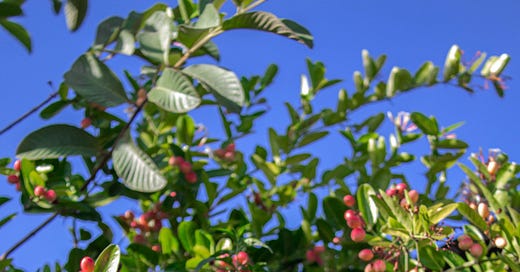



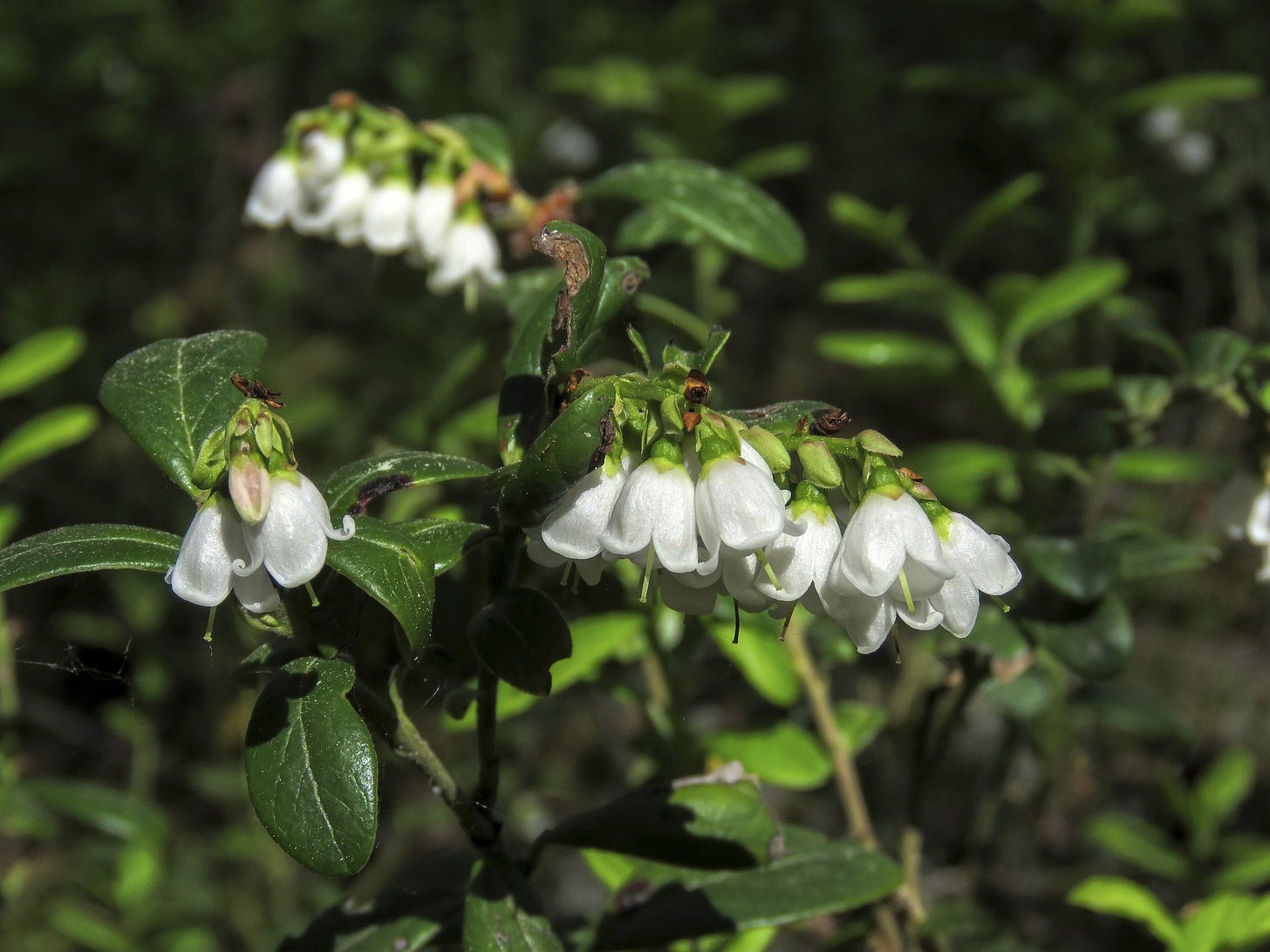
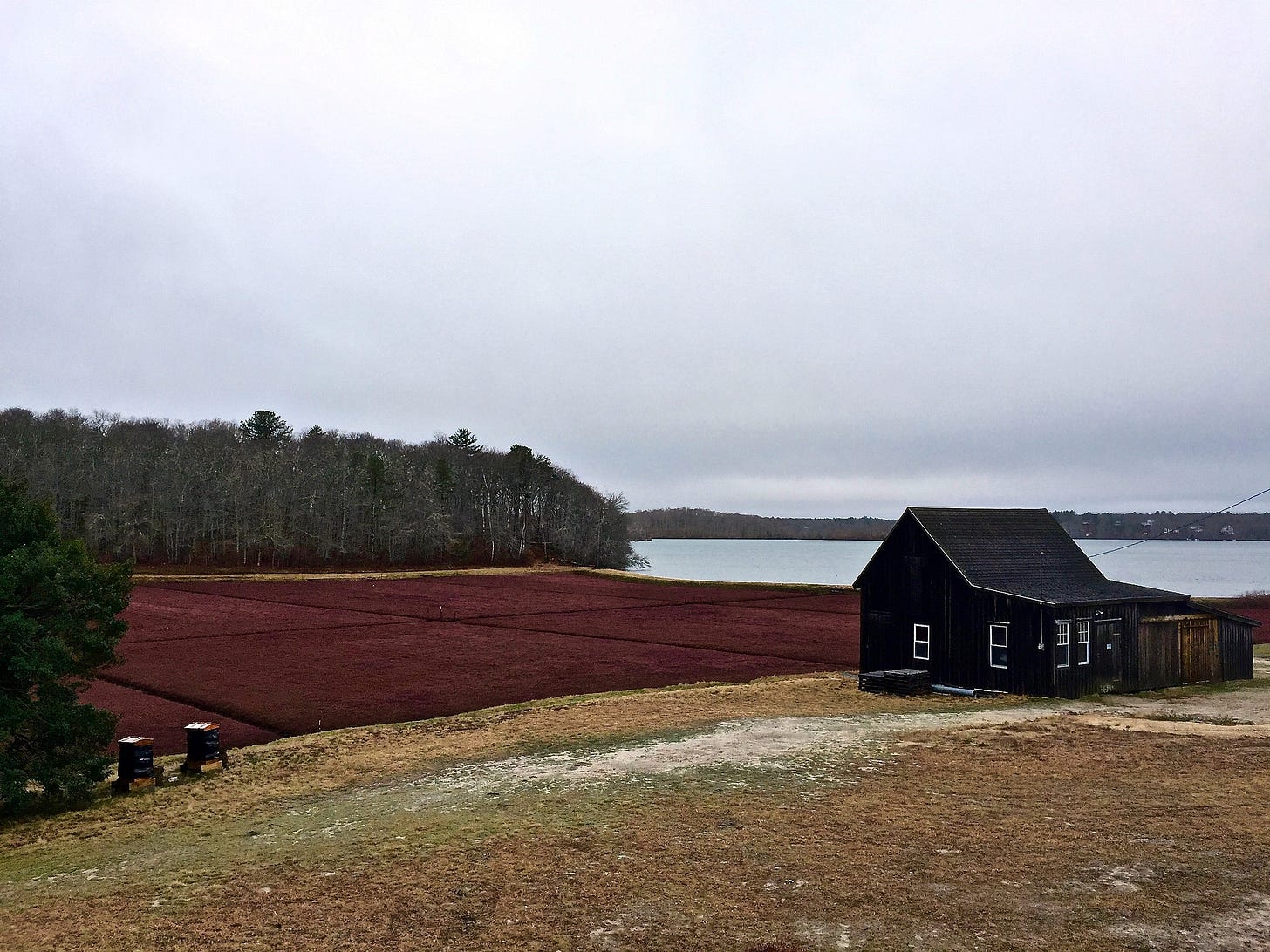
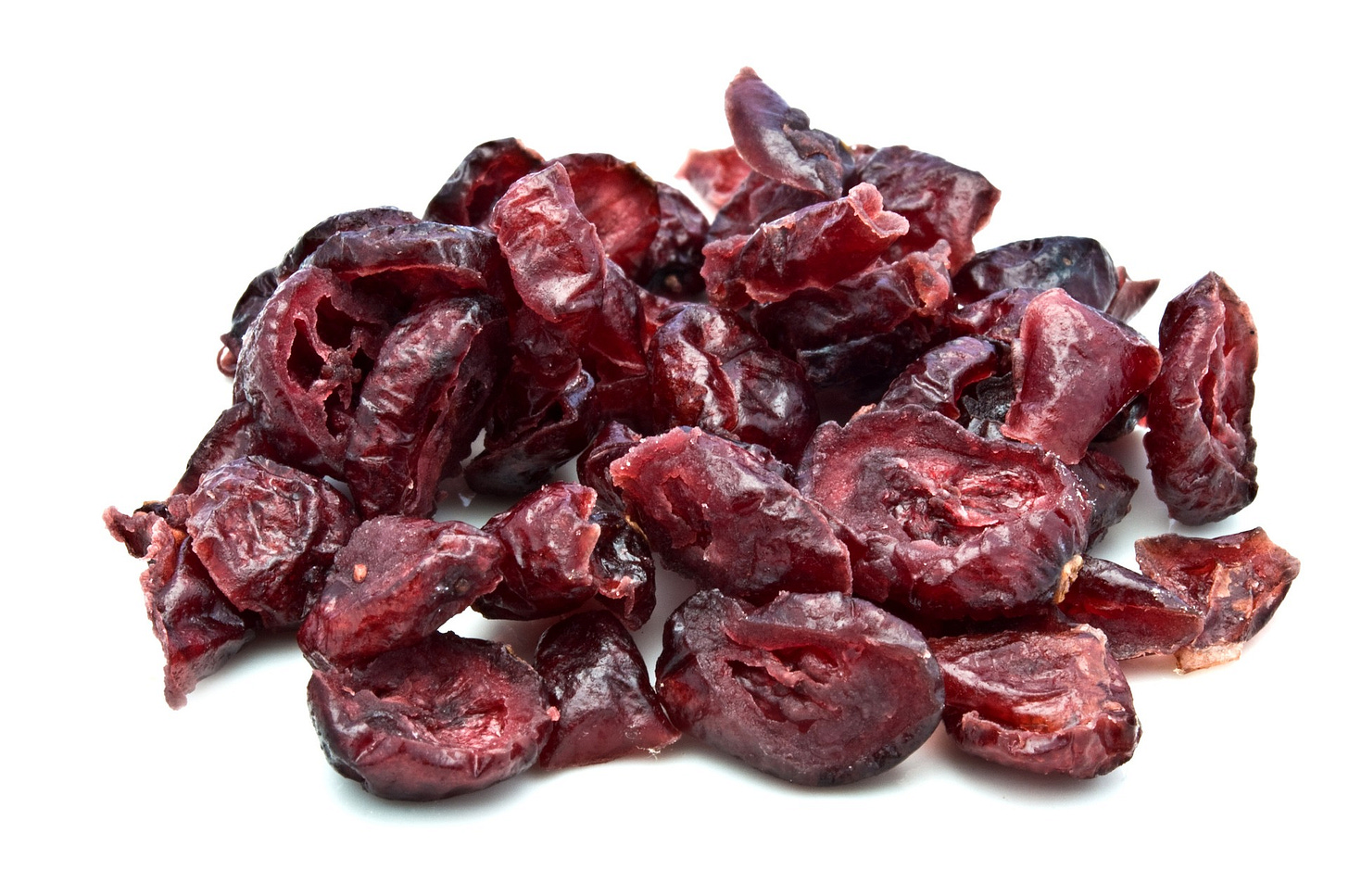

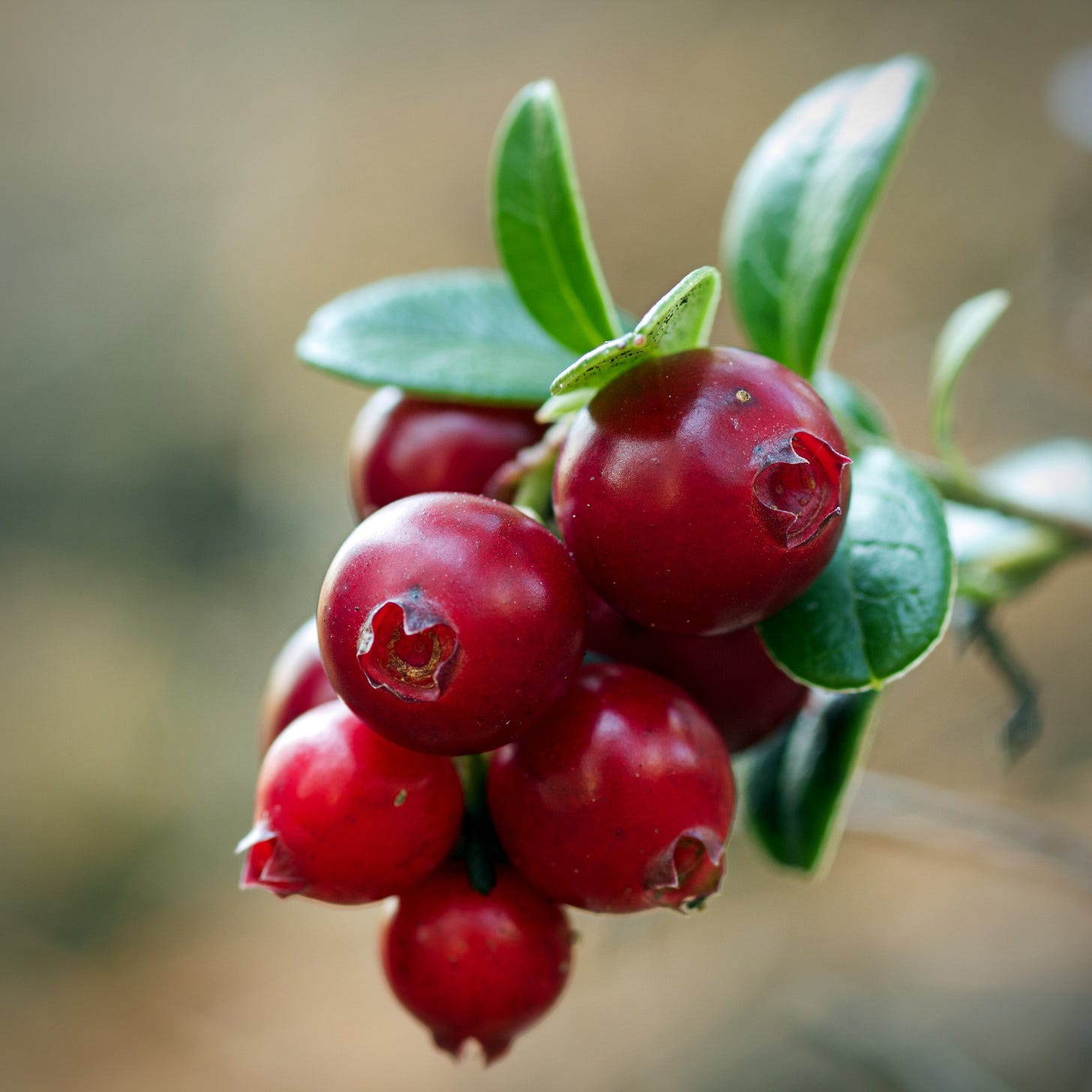

Great piece as always, hitting on the history, the chemistry, and the ecological aspects of this favorite food of mine. We've got cranberry orange relish, cranberry lemon bars, and cranberry nut bread on the menu this week. Tis the season!
Thanks for sharing. Great timing! I was just wondering what would grow in the moist section of my new food forest. Still in the planning stages so I think you have saved me a mistake. ☺